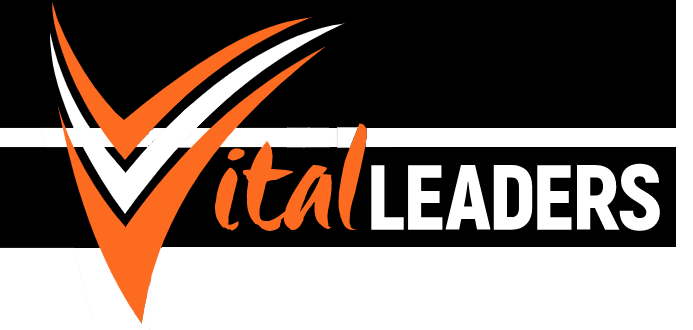Successful Leaders know connection matters.

Connection matters.
I started my career as a hairdresser [so that explains my out-there hair, right?], and learned very early on about the importance of personally connecting with my clients and team members.
I had the privilege of learning the ropes from a master hairdresser who had built a large, loyal following, which meant he was often solidly booked weeks in advance. He didn’t do 15 or even 30-minute appointments; he ensured quality time was spent giving personal attention to each one. He knew what was going on for each one of his clients; not in a superficial gossipy way, but genuine concern and connection. Styles were created to suit their individual lifestyle; the big events in their lives, new looks for new chapters, the compassionate care of cover-up styles for clients going through cancer treatment. He connected with emotional skin in the game.
Looking back, he was probably my first real leadership mentor, although he may not have realised that. In these early[first]career experiences, I gained valuable understanding about the importance of connecting with others at a deeper level, and building quality relationships with those we serve, those we influence, and those we lead.
Fast forward some 30+ years and several career chapters later [you can more read about my journey here]; what I know from personal experience is that to be a successful leader, you must excel in one of the most important [and often misunderstood] leadership skill: emotional connection.
Leadership is all about connecting with others.
It’s about how you relate to others, and the quality of those relationships. The higher up the ladder you go, the less important your technical skills become, and the more your interpersonal skills matter.
Sadly, I’ve witnessed many examples of what happens when this crucial skill is lacking; especially in the public sector. As a leadership coach, I’ve reviewed many Social+Emotional Intelligence assessment results with low level competence in areas of empathy, interpersonal effectiveness, and building bonds. It seems many in lead roles focus more on ruling and results, rather than relationships.
While recruitment practices continue to prioritise technical skills and experience, over leadership skills and attributes; team engagement remains at risk, and those placed in lead roles will find it’s ‘lonely at the top’; unless they make strong connections across all levels.
The ability to build emotional connections is often misunderstood; it’s not about being emotional, showing emotion, being soft or fluffy. It’s about making a human connection — building relationships person to person. Genuine interest in each colleague and team member, so they know you value the connection you have with them.
I know, for some people this comes naturally but, if you’re not one of those; given the importance of leaders being able to connect at this level, here’s a few things you might like to try doing more of:
1. Give people your undivided attention.
Be present – mindfully in the moment, when you meet with others. This is not as simple as it sounds. We are all busy, with ringing phones, e-mails by the hundreds, and piles of other stuff to do. I find my attention increases when I step away from the computer screen and desk. Two comfortable chairs and a small round table in the corner of your office is ideal … or go to a meeting room … or meet for coffee or lunch at a café.
In previous lead roles, I used to share my e-calendar and invite my team members to schedule in coffee chat time. Even now, when I’m delivering a leadership program for a client organisation, I take one [or no more than 3] for lunch each day. It’s what I call a ‘chat and chew’ session, and it’s all about building personal connections.
2. Be aware of your emotions and the message others take from that.
Emotions are contagious. Your moods, your care factor, your approach to building relationships, will have a direct impact [positive or negative] on those who report to you, and others in the organisation who notice. Sure, we all have our bad days, but it’s important to always be conscious of the impact that may have on others, and build behaviour self-control.
I’m a naturally positive person, but when ‘the Newman effect’ [QLD public sector decimation – 2012] impacted severely on my team, my stress levels hit an all-time high; to the point that my raised voice [aka – yelling] on the phone to 'Head Shed' [Brisbane office] was clearly heard down the hallway. When one of my direct reports came into my office out of concern for my well-being, I realised that they had never heard me behave like that. I took some time off away from the office to reassess my options, but also because I recognised the impact my emotions was having on them. They were stressed enough; they didn’t need to see their leader have a meltdown.
3. Develop your own sense of extraversion.
If you’re naturally an introvert, I acknowledge this won’t be easy. But as a leader, you are expected to be out front, taking the lead in developing relationships. You must develop the ability to reach out to others, regularly engaging in human interaction. Use your natural 'sit back and observe' nature, and start really noticing stuff. Provide comment on things that others value and give feedback; not just work-related stuff – comment on their colourful shirt or scarf, their new hairstyle, or just some small personal thing you’ve noticed. Keep your door open and inviting, have comfy sit-and-chat chairs in your office, and perhaps lollies in a bowl nearby.
If you are a natural extrovert [like me], you probably do the things I've just outlined. I bought a Nespresso machine, placed it on the end of the credenza just inside the door of my office, and invited my team to use it. While you may be a confident communicator, make sure you spend just as much time listening to others. Remember connection is two-way ... it's not all about you telling your stories. Encourage others to share with you, then show genuine curiosity in their map of the world.
As leaders, we achieve results by inspiring others to get on board, and enabling then to do the work tasks required, so that collectively, everyone achieves. Don’t just focus on tasks, or get bogged down by the projects piled up on your desk, or get caught up in your positional ego.
Connections matter.
When you build quality connections with your team, both the quality and quantity of output is likely to increase. Now that’s a win/win for all round workplace culture happiness.
Written by Jilinda Lee - recognised leadership coach and mentor for leaders and managers, Regional Leader for the Lean In global movement, and Founder / President of Lean In Queensland. – encouraging and enabling more women to step up into lead roles.
Jilinda is a passionate presenter, thought-leading commentator, and writer on all things leadership and diversity related. Her high energy sweet-spot is fueled and fired up when combining her two great passions - LEADERSHIP + FEMINISM.
Jilinda's personal mission is to raise the leadership bar, by developing more dynamic leaders through boosting diversity at the decision-making tables.
Her recently released book - Rock Your Stripes is available from major bookstores and online distributors.





